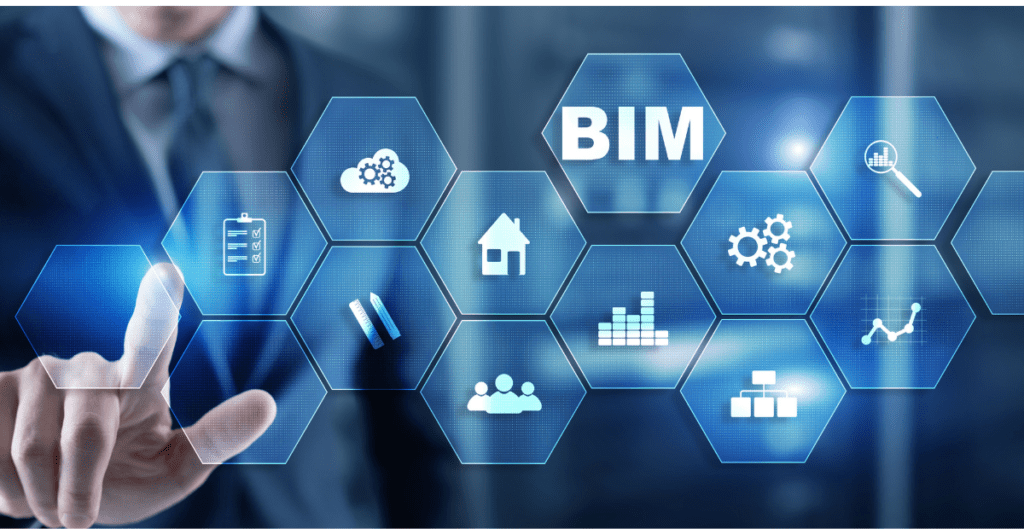In the rapidly evolving world of architecture, engineering, and construction (AEC), Building Information Modeling (BIM) has become a vital technology that has transformed construction from planning to construction. Choosing the right BIM software is a pivotal decision for professionals in the AEC sector, as it significantly impacts project efficiency, collaboration, and overall outcomes.
This expert guide is designed to help you navigate the complex landscape of BIM modeling software, providing you with the necessary insights, factors to consider, and comparisons of leading solutions in the market.
What is BIM software?
BIM software is a sophisticated tool that enables AEC professionals to visualize, design, simulate, and manage buildings and infrastructure projects more efficiently.
BIM software facilitates a more collaborative and integrated project management approach by leveraging digital representations of the physical and functional characteristics of places. Its impact on the construction industry is profound and multi-faceted:
- Enhanced collaboration: BIM software brings together professionals from different disciplines, fostering better communication and collaboration. By working on a unified platform, team members can access and update project details in real-time, reducing misunderstanding and errors.
- Improved efficiency: Through digital prototyping and simulation, BIM provides better accuracy for project planning and visualization before the actual construction begins. This significantly reduces time and cost overruns, as potential clashes can be identified in the design phase.
- Greater accuracy: BIM software enables precise quantities, dimensions, and material specifications calculations. This level of detail helps minimize waste and ensure projects stay within budget.
- Sustainability and compliance: BIM software facilitates project compliance with environmental standards and sustainability goals by simulating energy consumption. It also assists in creating designs that optimize energy usage and reduce carbon footprints.
- Facilitated maintenance: Post-construction, BIM models serve as a comprehensive database for facility management. They provide detailed information about every aspect of the building, simplifying maintenance, renovations, and expansions.
In summary, BIM software is transforming the construction industry by enabling an integrative workflow that enhances coordination, reduces costs, and improves the overall quality of the constructed environment.
Five key aspects to consider when choosing your BIM modeling software
Before deciding, it’s crucial to evaluate several critical aspects that will ensure the BIM modeling software you choose matches your project needs and workflow. Here are five key aspects to consider.
- Define your project requirements
Clearly defining your project needs will help you narrow down the list of available BIM software solutions. Consider the size and complexity of the project, number of team members, type of design (2D or 3D), and data integration requirements.
- Evaluate features and capabilities
Different BIM software offers a wide range of features and capabilities. Some software may focus more on design and visualization, while others may excel in clash detection or quantity takeoff. Make a list of must-have features and choose based on those. Look for software that offers a balance of functionality that meets your project requirements.
- Consider collaboration tools
Collaboration is key to successful construction projects. Look for BIM software that offers robust collaboration tools such as cloud-based sharing, real-time updates, and version control. Seamless stakeholder collaboration will streamline communication and decision-making processes, ultimately improving project outcomes.
- Evaluate compatibility and integration
When selecting BIM modeling software, consider its compatibility with other tools and systems used in your organization or by project partners. Look for software that integrates well with common design tools and construction management platforms. Seamless integration will ensure smooth data flow between different systems and reduce manual data entry errors.
- Consider training and support
Implementing new BIM software requires users to be trained to maximize its potential benefits. Consider the software vendor’s availability of training resources, such as online tutorials, user guides, or live support options. Additionally, look for a vendor that offers responsive technician support so you can ask questions or address issues easily.
Conclusion
Choosing the right BIM modeling software can significantly impact how successful your project is. You can select a BIM software solution that best fits your needs by carefully evaluating your project requirements, considering features and capabilities, prioritizing collaboration tools, assessing compatibility and integration options, and evaluating training and support resources.
Remember that investing time upfront in selecting the right BIM modeling software will improve efficiency, communication, collaboration, and overall project outcomes.
